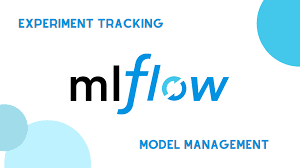comprehensive guide to Getting Started with MLflow: Streamlining the Machine Learning Lifecycle 2024
Managing machine learning workflows involves multiple components, including experiment tracking, model packaging, deployment, and monitoring. Without proper tools, keeping track of every detail can become chaotic. MLflow, an open-source platform, solves these challenges by unifying the entire ML lifecycle into a seamless workflow.
This blog explores what MLflow is, its components, how to set it up, and best practices for leveraging it effectively.
What is MLflow?

MLflow is an open-source platform designed to manage the complete lifecycle of machine learning models. It provides tools for:
- Experiment Tracking:
- Logging and visualizing metrics, parameters, and artifacts.
- Model Packaging:
- Saving models in a standardized format for consistent deployment.
- Model Management:
- Centralizing models with versioning and lifecycle tracking.
- Model Deployment:
- Integrating models into production environments like REST APIs or cloud platforms.
Why MLflow?
- Reproducibility:
- Tracks all experiment metadata for recreating results.
- Collaboration:
- Facilitates team workflows by centralizing experiments and models.
- Scalability:
- Handles large-scale projects with seamless integration into CI/CD pipelines.
Key Components of MLflow

1. MLflow Tracking
MLflow Tracking is the core component for experiment management. It enables:
- Logging hyperparameters, metrics, and artifacts.
- Comparing results across experiments using visual dashboards.
Example:
pythonCopyEditimport mlflow
with mlflow.start_run():
mlflow.log_param("learning_rate", 0.001)
mlflow.log_metric("accuracy", 0.92)
mlflow.log_artifact("model.pkl")
2. MLflow Projects
MLflow Projects standardize code packaging to ensure reproducibility across environments.
Features:
- Define dependencies in a
conda.yamlorrequirements.txt. - Create reproducible environments for collaborators.
Example Project Structure:
bashCopyEditmy_project/
│
├── MLproject # Defines project structure and entry points
├── conda.yaml # Dependency environment
├── train.py # Training script
3. MLflow Models
MLflow Models provides a framework-agnostic format for saving and deploying machine learning models.
Supported Formats:
- Python Function: Serve models as REST APIs.
- ONNX: Optimized for deep learning frameworks.
- PMML: Ideal for predictive analytics.
Example:
pythonCopyEditimport mlflow.sklearn
mlflow.sklearn.log_model(model, "model")
4. MLflow Model Registry
The Model Registry is a centralized repository for managing models and their lifecycles.
Features:
- Versioning: Assigns unique identifiers to model iterations.
- Stages: Tracks models through staging, production, and archiving.
- Metadata: Logs evaluation metrics and artifacts.
Example:
pythonCopyEditfrom mlflow.tracking import MlflowClient
client = MlflowClient()
client.transition_model_version_stage(
name="classification_model",
version=1,
stage="Production"
)
Setting Up MLflow

1. Install MLflow
Install MLflow using pip:
bashCopyEditpip install mlflow
2. Set Up a Tracking Server
Run an MLflow server locally or in the cloud:
bashCopyEditmlflow server \
--backend-store-uri sqlite:///mlflow.db \
--default-artifact-root ./mlartifacts \
--host 0.0.0.0
For scalable setups, integrate with cloud storage:
bashCopyEditmlflow server \
--backend-store-uri postgresql://username:password@host/dbname \
--default-artifact-root s3://bucket-name \
--host 0.0.0.0
Best Practices for Using MLflow

- Automate Logging:
- Integrate MLflow with training scripts for automatic logging.
- Example:pythonCopyEdit
import mlflow with mlflow.start_run(): # Automatically log metrics, parameters, and artifacts mlflow.log_param("batch_size", 32) mlflow.log_metric("loss", 0.25)
- Standardize Project Structure:
- Use MLflow Projects to package code with dependencies, ensuring reproducibility.
- Use Model Registry Effectively:
- Promote models to staging or production only after rigorous validation.
- Track deployment history for auditing and troubleshooting.
- Integrate with CI/CD:
- Use tools like Jenkins or GitHub Actions to automate model deployment pipelines.
- Monitor Production Models:
- Continuously monitor deployed models for performance degradation or data drift.
Real-World Applications of MLflow
- E-Commerce Personalization:
- Track experiments for recommendation engines.
- Deploy models in real-time for personalized product suggestions.
- Fraud Detection in Finance:
- Log metrics for models detecting anomalies in transaction data.
- Automate deployment pipelines for frequent model updates.
- Healthcare Predictive Analytics:
- Version models for disease prediction and ensure compliance with regulations.
Challenges Addressed by MLflow
- Reproducibility:
- Logs all metadata to ensure experiments can be replicated.
- Collaboration:
- Centralizes experiments and models for team review.
- Traceability:
- Tracks lineage for datasets, parameters, and artifacts.
- Scalability:
- Handles large-scale projects with distributed storage and cloud integration.
Future Trends in MLflow
- AI-Powered Insights:
- AI-driven suggestions for hyperparameters and architecture optimization.
- Enhanced Monitoring:
- Real-time anomaly detection in production pipelines.
- Serverless MLflow:
- Fully managed MLflow instances for cloud-native scalability.
- Edge Deployment Integration:
- Simplified workflows for deploying models on edge devices.
Conclusion
MLflow revolutionizes machine learning workflows by offering end-to-end lifecycle management. From experiment tracking to model deployment, it provides the tools necessary to streamline processes, improve collaboration, and ensure reproducibility.
Ready to transform your ML workflows? Start leveraging MLflow today and unlock the full potential of your models!